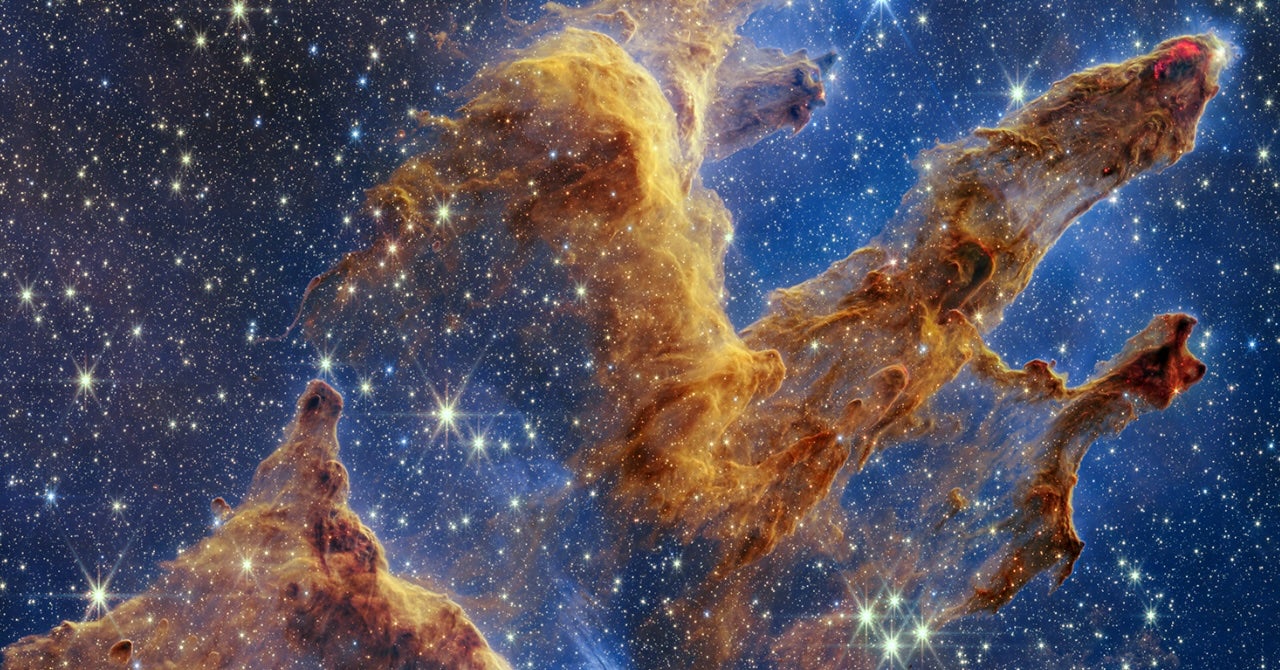Science
Researchers Uncover Origins of Buckyballs with Earth Experiments

In a groundbreaking study, a team of international researchers led by scientists at CU Boulder has unveiled significant insights into the origins of buckyballs, a type of carbon molecule found in the interstellar medium. These findings, published in the Journal of the American Chemical Society, reveal how organic molecules like buckyballs may form in space, offering potential clues about the building blocks of our solar system.
The research highlights the transformation of polycyclic aromatic hydrocarbons (PAHs), complex organic molecules abundant in the universe, into fullerenes, including the well-known buckyball, which consists of 60 carbon atoms arranged in a spherical shape reminiscent of a soccer ball. Lead author Jordy Bouwman, an assistant professor in the Department of Chemistry at CU Boulder, explained that understanding how carbon evolves in space is crucial for grasping how it contributes to planetary systems, including our own.
Recreating Space Chemistry on Earth
To simulate the chemical processes occurring in space, the team studied two small PAHs, anthracene and phenanthrene. Both molecules consist of carbon atoms arranged in hexagonal patterns, similar to a honeycomb structure. These compounds are prevalent on Earth, often found in smoke and soot.
By bombarding the PAHs with a beam of electrons, the researchers mimicked the effects of radiation present in the interstellar medium. This interaction resulted in the loss of hydrogen atoms from the PAHs, leading to the formation of new charged organic molecules. These products were subsequently analyzed at the Free Electron Lasers for Infrared eXperiments (FELIX), a unique research facility in Nijmegen, Netherlands.
The study’s outcomes revealed a surprising transformation. When the team struck anthracene and phenanthrene with electrons, the resulting molecules not only lost hydrogen but also underwent a radical structural rearrangement, incorporating both hexagonal and pentagonal carbon arrangements. This finding was unexpected and suggested a new pathway for the synthesis of fullerenes.
“That was a very surprising result—that just by kicking off a hydrogen atom or two, the entire molecule completely rearranged,” said Sandra Brünken, co-author of the study and associate professor at Radboud University in the Netherlands.
Implications for Astrophysics
The research raises important questions about the prevalence of pentagon-containing molecules in space and their role in the formation of buckyballs. The results could provide a fingerprint for scientists to identify similar molecules in the cosmos using advanced observational tools like the James Webb Space Telescope.
Bouwman and Brünken hope their findings will encourage astrophysicists to explore the presence of these complex molecules in interstellar environments. “You can take our results from the laboratory and then use them as a fingerprint to look for the same signatures in space,” Brünken noted.
Co-authors of the study from CU Boulder include graduate students Madison Patch and Rory McClish. Collaborators also came from institutions such as Radboud University, Leiden University, Paris-East Créteil University, and the University of Maryland College Park.
This research not only enhances our understanding of carbon chemistry in the universe but also connects the dots to the origins of the solar system, demonstrating the intricate processes that govern the formation of complex organic molecules in the vast expanses of space.
-

 Lifestyle3 months ago
Lifestyle3 months agoLibraries Challenge Rising E-Book Costs Amid Growing Demand
-

 Sports3 months ago
Sports3 months agoTyreek Hill Responds to Tua Tagovailoa’s Comments on Team Dynamics
-

 Sports3 months ago
Sports3 months agoLiverpool Secures Agreement to Sign Young Striker Will Wright
-

 Lifestyle3 months ago
Lifestyle3 months agoSave Your Split Tomatoes: Expert Tips for Gardeners
-

 Lifestyle3 months ago
Lifestyle3 months agoPrincess Beatrice’s Daughter Athena Joins Siblings at London Parade
-

 World3 months ago
World3 months agoWinter Storms Lash New South Wales with Snow, Flood Risks
-

 Science3 months ago
Science3 months agoTrump Administration Moves to Repeal Key Climate Regulation
-

 Science2 months ago
Science2 months agoSan Francisco Hosts Unique Contest to Identify “Performative Males”
-

 Business3 months ago
Business3 months agoSoFi Technologies Shares Slip 2% Following Insider Stock Sale
-

 Science3 months ago
Science3 months agoNew Tool Reveals Link Between Horse Coat Condition and Parasites
-

 Sports3 months ago
Sports3 months agoElon Musk Sculpture Travels From Utah to Yosemite National Park
-

 Science3 months ago
Science3 months agoNew Study Confirms Humans Transported Stonehenge Bluestones









